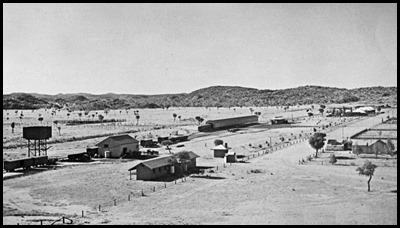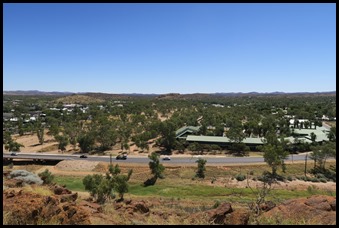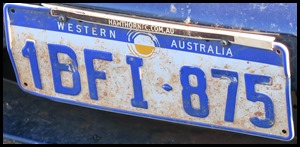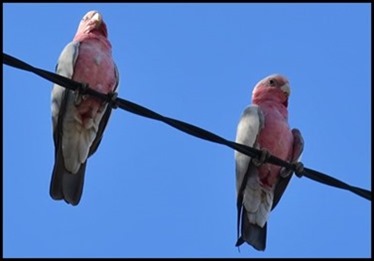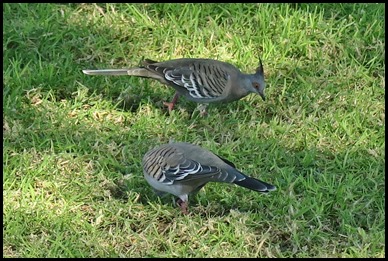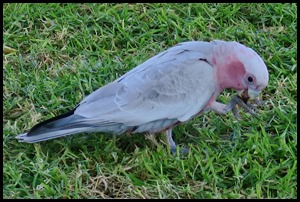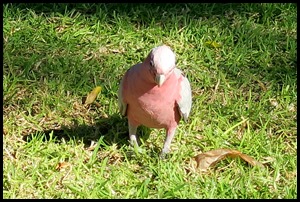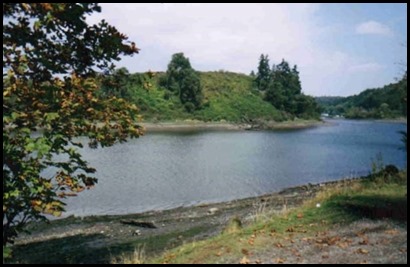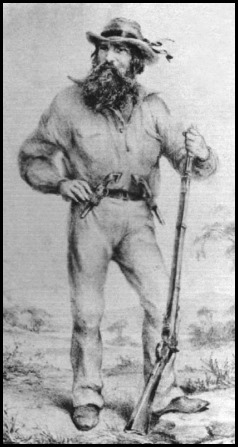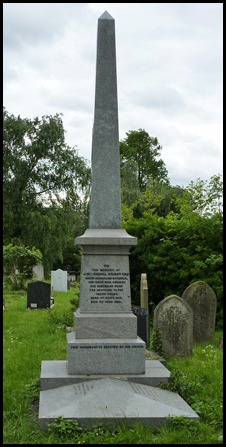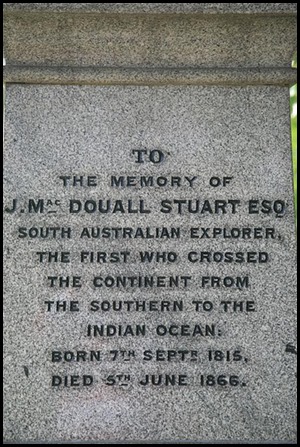Alice Bimble

|
Alice Bimble Between the
Botanic Gardens and the Reptile Centre
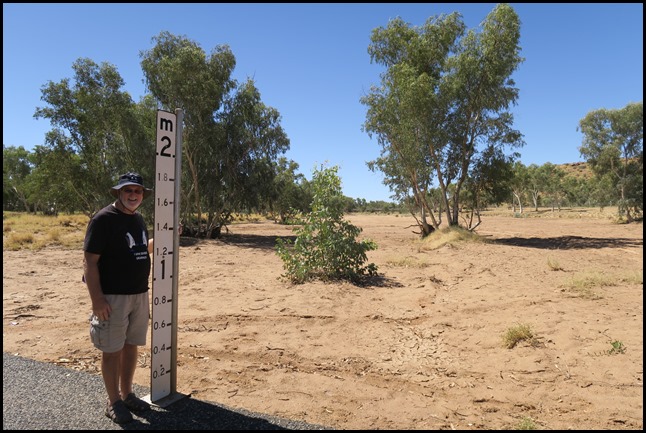 Amazing as we crossed the river bed
and found a depth meter. Hard to believe that this
floods.........
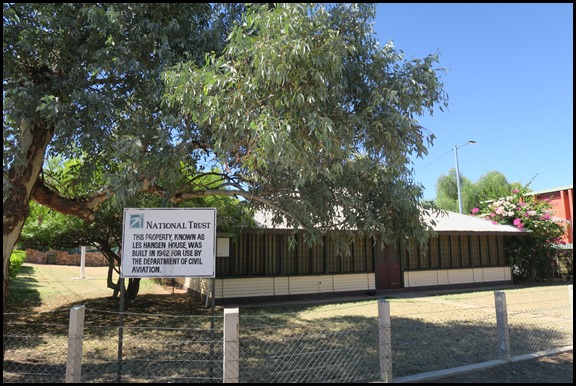 We guessed 1945 was about as ancient as a house can be here. Les Hansen’s property is one of the few houses in the Alice Springs Heritage Precinct that still retains all its original outbuildings. It was designed by architect Beni Burnett, for use by senior public servants. At present the property is leased and not open for public inspection except during special National Trust events.
Early 1900’s and today.
We carried on down the street and found cars from local, south and the west.
The local won the prize for everything.
We had chaps above us and fancy hair-dos beside us.
Galahs all over the place. 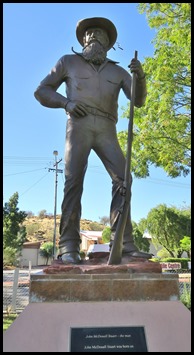 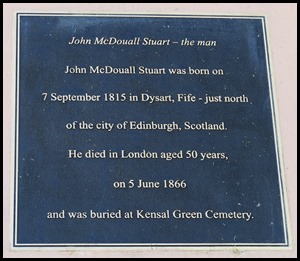  We walked past John McDouall Stuart and wanted to know more.
John McDouall Stuart (1815-1866), explorer, was born on
the 7th of September 1815 at Dysart, Fife, Scotland, fifth son of William
Stuart, army captain, and his wife Mary, née McDouall. Educated at the Scottish
Naval and Military Academy, Edinburgh, in 1838 he decided to migrate to South
Australia. He arrived in the Indus in January 1839 and joined a surveying party.
Having had a taste of the outback, in 1844 he accepted Charles
Sturt's offer to join a party exploring the centre of the
continent. The seventeen-month journey revealed only desolation, but Stuart now
knew the problems of exploring waterless regions with a large expedition: he had
seen fatal scurvy at close hand, had observed the Aboriginals and, having drawn
many of the maps, had become familiar with the topography of the
centre.
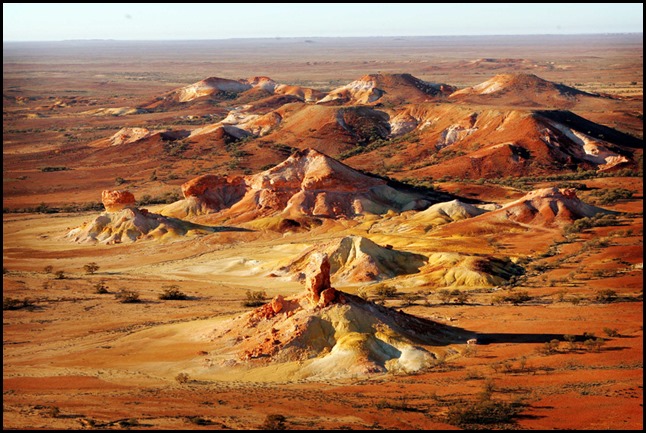 In 1846-58 Stuart practised as a surveyor, had an estate agency and spent some time at Port Lincoln. With financial help from William Finke, Stuart set out on the 14th of May 1858 with an assistant, an Aboriginal tracker and provisions for four weeks to explore beyond Lake Torrens and Lake Gairdner and to look for grazing land. He travelled as far as Coober Pedy before turning south and then west. The Aboriginal left them on the 3rd of August, and with supplies and water almost exhausted and the horses lame they struggled into T. M. Gibson's outstation at Streaky Bay on the 22nd of August. After ten days’ rest Stuart returned to Adelaide to an enthusiastic welcome. He had discovered 40,000 square miles (103,600 square kilometres) of possible sheep country at minimal cost. He gave his diary and maps to the South Australian government and was granted a lease of 1000 square miles (2590 kilometres) of the new country. In 1859 Finke and James Chambers financed another expedition. Leaving in April with four others, Stuart travelled 500 miles (805 kilometres) blazing a trail with sufficient water for a permanent route north. On the 4th of November he set out on his third expedition and spent six weeks surveying new runs. In the Davenport Range he found signs of gold; after three weeks fruitless prospecting his men rebelled and the party returned to Chambers Creek where all but William Kekwick were paid off. He set off again on the 2nd of March 1860 with two men and thirteen horses. Most of their provisions were soon spoilt by floods, and when the party reached the freshwater creek that Stuart named after Finke on the 4th of April, they were suffering from scurvy and he had lost the sight of his right eye. They followed the Finke to the mountains that Stuart named after Governor Sir Richard Macdonnell and headed north again, naming Anna's Reservoir after Chambers' youngest daughter; on the 22nd of April he camped where he calculated the centre of the continent to be. Two miles (3.2 kilometres) away he named Central Mount Sturt (later changed to Stuart) and planted a flag as 'a sign to the natives that the dawn of liberty, civilization and Christianity was about to break on them'. For the next month the party tried in vain to find a route with sufficient water to take them to the north-west. When rain fell late in May they travelled 200 miles (322 kilometres) north to Tennant's Creek where they made a depot. Pressing on to Kekwick Ponds Stuart tried to penetrate the near-by scrub but on the 25th of June was forced back. Two months later the party staggered into Chambers Creek. On his return to Adelaide Stuart was fêted at a public banquet and at Government House; one newspaper urged that he be given the government reward for crossing the continent because Attack Creek, his furthest point, was only 200 miles (322 kilometres) from explored country in the north.
At the end of 1860 the South Australian government voted £2500 to equip a large expedition to be led by Stuart. Burke and Wills had already set out to cross the continent so there was no time to lose if a South Australian party was to arrive first. On the 1st of January 1861 he left Chambers Creek with eleven men and reached Attack Creek late in April; with two others he discovered a way through the scrub that had defeated him before, and found Sturt's Plain. After exhausting failures to pass the plains, with their provisions low and their clothes in shreds, Stuart gave in and on the 12th of July turned south to reach Adelaide on the 23rd of September. He received the 1861 gold medal of the Royal Geographical Society from the governor. Stuart was still convinced he could cross the continent. Shopkeepers gave him supplies for a fresh party, Chambers provided the horses and saddlery, and the government gave him £200 and instructions to take a botanist Frederick Waterhouse with him. They left Adelaide at the end of October 1861 but Stuart was delayed for five weeks by an accident; he joined the party at Moolooloo station where one of the men left after a quarrel. The party reached the centre on the 12th of March 1862, Attack Creek on the 28th and Sturt's Plain on the 15th of April where they were blocked and Stuart turned to the scrub. Although they only made a mile (1.6 kilometres) an hour and the water-bags were badly torn they arrived at Daly Waters, named after the new governor, on the 28th of May and made camp for two weeks. His endurance was beginning to falter, but on the 24th of July they forced their way through a thick belt of scrub and came upon the Indian Ocean. Many of the horses were so weak they had to be abandoned on the way back. Ill with scurvy and nearly blind, Stuart had to be carried on a stretcher slung between two horses; recovering sufficiently to ride by the time they reached Mount Margaret on the 26th of November, he pushed on with three of the party and arrived in Adelaide on the 17th of December. On a public holiday on the 21st of January 1863, crowds lined the streets amid banners strung from buildings. He was awarded £2000, though allowed only the interest from it, and his party received £1500 between them.
White-haired, exhausted and nearly blind, Stuart decided to visit his sister in Scotland and sailed in April 1864. He later went to London. His claims for a greater reward from the South Australian government led to another £1000, again with only the interest. His Explorations in Australia. The Journals of John McDouall Stuart was edited by W. Hardman and published in 1864. He died of ramolissement and cerebral effusion on the 5th of June 1866 in London and was buried in the Kensal Green cemetery. He has remained a controversial figure, lonely and independent, with a fierce pride. His reputation as a heavy drinker has led detractors to minimize his achievements, even to the extent of doubting that he reached the Indian Ocean in 1862, though the tree he had marked with JMDS was positively identified in 1883 and photographed in 1885. Whatever the rubbish stuff, what an amazing character who wore himself into the ground, literally. In many ways it is such a shame that this town was named for him but it changed over time to Alice Springs.
We ended up in Jaycar for Bear to look at boys toys, I found a pink toolbox, what a nifty idea. Time for an ice-cream and then a swim back at the motel.
ALL IN ALL A TASTE OF THE OUTBACK HARD TO BELIEVE WE ARE SO FAR FROM THE NEAREST TOWN (1000 MILES IN FACT) |
